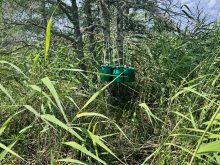CHICAGO, Illinois – EMerge Interactive Inc., which makes marketing and management software for the beef production industry, says its new camera that detects deadly E. coli bacteria could be tested in beef plants next year.
The electronic device, which scans raw beef for contaminants that harbour germs, has successfully completed university trials this summer and may be tested in plants early next year, eMerge said in a News release
news.
Bacteria-related diseases, including those from E. coli 0157:H7, cause 76 million illnesses and 5,000 deaths a year in the United States, said Tom Casey, a microbiologist for the federal government’s Agricultural Research Service and co-inventor of the detection system.
Read Also

Government, industry seek canola tariff resolution
Governments and industry continue to discuss how best to deal with Chinese tariffs on Canadian agricultural products, particularly canola.
“There are no clear timetables at this point, but clearly we are going to move very aggressively,” said Tom Tippens, eMerge’s chief executive officer.
Developed by Iowa State University and the U.S. Department of Agriculture, the device examines beef carcasses and displays contaminants, even microscopic ones, on a monitor so meat cutters can find and remove them.
The beef industry already has safeguards in place to remove contaminants, including trimming, steam pasteurization and acid washes, but outbreaks still occur.
The American Meat Institute, which represents the meat packing industry, said detection systems similar to eMerge’s are being studied, but so far none is in everyday use.
“The technology is relatively new, and I’m not aware of anyone in the industry that has implemented a system such as that,” said Randy Huffman, vice-president for scientific affairs at the American Meat Institute’s AMI Foundation.
“What has obviously been missing is a fast, accurate way to make sure that bacteria-bearing fecal matter is eradicated from beef carcasses before they leave the plant,” Casey said in the eMerge statement. “We believe we’ve discovered the solution, and our trials are confirming it.”
The trials were conducted at Oklahoma State University in June and at the University of Florida in July.
“This technology looks like it will overcome the inherent limitations of visual inspection, providing packers with an important aid to removing virtually all contamination,” said Roger West, professor of meat sciences at the U of F.
















